The Wave Media also talks about this technology. There are many research teams in China currently working in this exciting field.
You are using an out of date browser. It may not display this or other websites correctly.
You should upgrade or use an alternative browser.
You should upgrade or use an alternative browser.
News on China's scientific and technological development.
- Thread starter Quickie
- Start date
So I put together a list of technology and industries and ranked them in how well China is doing vs America/The West. This is just off the top of my head so it's probably very wrong, feel free to change the ranking around if you like
Areas where China is years ahead
Commercial drones
Solar PV
Advanced nuclear
Batteries
5G
Rare earth mining and processing
Hypersonic missiles
Quantum communications
Hydrogen economy
Solid rocket motors
Ultra high voltage transmission
High speed trains and maglev trains
Shipbuilding, espically of the high end LNG carriers
Pumped hydro and hydropower
Areas where China has a slight edge
3rd gen nuclear
Electric vehicles
Automation
Large scale computing/supercomputing
Wind turbines
Electronics
Areas where China is neck and neck with America/The West
A.I
Chemical industry and processing
Biofuels
Quantum computing
Radar
3D printing
Areas where China is slightly behind
Large language models
Nanotechnology
Exotic materials like graphene, carbon nanotubes, high-entropy alloys, superconductors
High precision high strength electric motors
CNC machines
Avionics
Material science
Areas where China is years behind
Engines, both for jets, rockets, automobiles and ships
Satellite mega constellations
Heavy lift rockets, reusable rockets
Astronomy, space science, ground/space telescopes
Theoretical physics
Optic systems
Lithography
Certain software like operating systems
Semiconductors and semiconductor equipment
Biotech in general
Vaccines
GMO crops/GMO animals
Synthetic biology and genetic engineering
Geothermal
Metallurgy
Pharmaceutics
Deep earth drilling, fracking
Humanoid robotics
Areas where China is years ahead
Commercial drones
Solar PV
Advanced nuclear
Batteries
5G
Rare earth mining and processing
Hypersonic missiles
Quantum communications
Hydrogen economy
Solid rocket motors
Ultra high voltage transmission
High speed trains and maglev trains
Shipbuilding, espically of the high end LNG carriers
Pumped hydro and hydropower
Areas where China has a slight edge
3rd gen nuclear
Electric vehicles
Automation
Large scale computing/supercomputing
Wind turbines
Electronics
Areas where China is neck and neck with America/The West
A.I
Chemical industry and processing
Biofuels
Quantum computing
Radar
3D printing
Areas where China is slightly behind
Large language models
Nanotechnology
Exotic materials like graphene, carbon nanotubes, high-entropy alloys, superconductors
High precision high strength electric motors
CNC machines
Avionics
Material science
Areas where China is years behind
Engines, both for jets, rockets, automobiles and ships
Satellite mega constellations
Heavy lift rockets, reusable rockets
Astronomy, space science, ground/space telescopes
Theoretical physics
Optic systems
Lithography
Certain software like operating systems
Semiconductors and semiconductor equipment
Biotech in general
Vaccines
GMO crops/GMO animals
Synthetic biology and genetic engineering
Geothermal
Metallurgy
Pharmaceutics
Deep earth drilling, fracking
Humanoid robotics
If you’re neck and neck on something like high entropy alloys you’re probably not behind on metallurgy.So I put together a list of technology and industries and ranked them in how well China is doing vs America/The West. This is just off the top of my head so it's probably very wrong, feel free to change the ranking around if you like
Areas where China is years ahead
Commercial drones
Solar PV
Advanced nuclear
Batteries
5G
Rare earth mining and processing
Hypersonic missiles
Quantum communications
Hydrogen economy
Solid rocket motors
Ultra high voltage transmission
High speed trains and maglev trains
Shipbuilding, espically of the high end LNG carriers
Pumped hydro and hydropower
Areas where China has a slight edge
3rd gen nuclear
Electric vehicles
Automation
Large scale computing/supercomputing
Wind turbines
Electronics
Areas where China is neck and neck with America/The West
A.I
Chemical industry and processing
Biofuels
Quantum computing
Radar
3D printing
Areas where China is slightly behind
Large language models
Nanotechnology
Exotic materials like graphene, carbon nanotubes, high-entropy alloys, superconductors
High precision high strength electric motors
CNC machines
Avionics
Material science
Areas where China is years behind
Engines, both for jets, rockets, automobiles and ships
Satellite mega constellations
Heavy lift rockets, reusable rockets
Astronomy, space science, ground/space telescopes
Theoretical physics
Optic systems
Lithography
Certain software like operating systems
Semiconductors and semiconductor equipment
Biotech in general
Vaccines
GMO crops/GMO animals
Synthetic biology and genetic engineering
Geothermal
Metallurgy
Pharmaceutics
Deep earth drilling, fracking
Humanoid robotics
Exotic materials is in the slightly behind group though, not neck and neck. Anyway I grouped all those exotic materials together, from what I can tell China is actually way behind in high entropy alloys, but they're doing ok on other exotic materials like graphene and carbon nanotubes, so it's averages out to slightly behind.If you’re neck and neck on something like high entropy alloys you’re probably not behind on metallurgy.
Anyway this kind of logic don't work when doing this kind of board comparsion. You might as well ask why China is doing so well on Quantum computing while their semiconductor industry lags, or why chinese EV so far ahead of chinese ICE cars. Why chinese drones are dominating but chinese aircraft aren't. Europe can't make a 5th gen fighter aircraft, but makes some of the best passenger jets and jet engines. Europe doesn't have a human rated rocket, but has some of the best space/ground telescopes and space science/astronomy programs out there. Etc etc.
So I put together a list of technology and industries and ranked them in how well China is doing vs America/The West. This is just off the top of my head so it's probably very wrong, feel free to change the ranking around if you like
Areas where China is years ahead
Commercial drones
Solar PV
Advanced nuclear
Batteries
5G
Rare earth mining and processing
Hypersonic missiles
Quantum communications
Hydrogen economy
Solid rocket motors
Ultra high voltage transmission
High speed trains and maglev trains
Shipbuilding, espically of the high end LNG carriers
Pumped hydro and hydropower
Areas where China has a slight edge
3rd gen nuclear
Electric vehicles
Automation
Large scale computing/supercomputing
Wind turbines
Electronics
Areas where China is neck and neck with America/The West
A.I
Chemical industry and processing
Biofuels
Quantum computing
Radar
3D printing
Areas where China is slightly behind
Large language models
Nanotechnology
Exotic materials like graphene, carbon nanotubes, high-entropy alloys, superconductors
High precision high strength electric motors
CNC machines
Avionics
Material science
Areas where China is years behind
Engines, both for jets, rockets, automobiles and ships
Satellite mega constellations
Heavy lift rockets, reusable rockets
Astronomy, space science, ground/space telescopes
Theoretical physics
Optic systems
Lithography
Certain software like operating systems
Semiconductors and semiconductor equipment
Biotech in general
Vaccines
GMO crops/GMO animals
Synthetic biology and genetic engineering
Geothermal
Metallurgy
Pharmaceutics
Deep earth drilling, fracking
Humanoid robotics
so many mistakes in this list.Areas where China is years behind
Engines, both for jets, rockets, automobiles and ships
Satellite mega constellations
Heavy lift rockets, reusable rockets
Astronomy, space science, ground/space telescopes
Theoretical physics
Optic systems
Lithography
Certain software like operating systems
Semiconductors and semiconductor equipment
Biotech in general
Vaccines
GMO crops/GMO animals
Synthetic biology and genetic engineering
Geothermal
Metallurgy
Pharmaceutics
Deep earth drilling, fracking
Humanoid robotics
i m actually a lazy person but i have to answer this.
you said, China is far behind in 'Engines, both for jets, rockets, automobiles and ships' this is the biggest misconception regarding China in propulsion technology.
China right now producing some one of the best commercial diesel engines in the world. very few people know this coz this is not a strategic industry so experts/media usually ignore this.
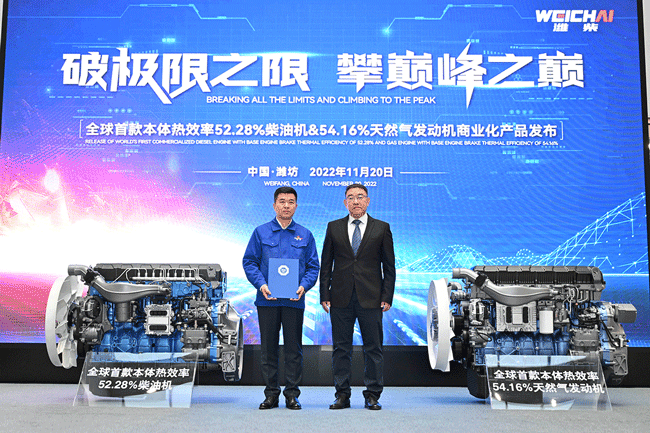
Weichai Releases the World's First Commercialized Diesel Engine with Base Engine Thermal Efficiency of 52.28% and Natural Gas Engine with Base Engine Thermal Efficiency of 54.16%
Weichai power is absolutely king in commercial diesel engines. from Heavy trucks to Buses to heavy machinery to Agriculture machinery and marine industry
During 2022 Weichai Power controlled around 32% of the global diesel power engine market, according to analysis by Fitch Ratings, making it world’s largest manufacturer of heavy duty truck engines.
So while the name Weichai Power may not be a household name globally, there’s a high chance you’ve crossed paths with Weichai’s diesel, or gas, engine technology in some way during your lifetime.
In 2020, Weichai sold 981,000 engines to clients in more than 100 countries.
It manufactures over 100 different types of diesel engines and a smaller number of gas engines for the following vehicle and machinery categories:
Weichai power has a market cap of around US$150 billion and employs over 82,000 people across it various business units and subsidiary companies around the world.. LOOL
Chery , Geely and FAW group all right now producing very advance combustion engines for their Car industry.. China is yet to reach the level of German/Japanese IC engines for Cars but this is relatively mature sector in China so hardly matter now. indigenous IC engine doing really really well.
Neither China is far far behind in Rocket engines.
after WS-15 entered in production. China is now a major player in military advance turbofan engine industry. only USA is ahead. France/UK is yet to produce 30,000 lbs thrust military engine. i m not talking about quality here. this is about industrial capacity to design and produce high thrust military turbofan engine. so in this sector China is not far behind.
there is only 1 area in gas turbine technology, where China is probably 1 or 2 decade behind is, Commercial aircraft engines. coz China started very late. fine we accept it.
**************************************************************************************************************
you said, China is years behind in Metallurgy/Material science. this is wrong too
in 2021, more than 50 percent of world's total patent grants belong to People's Republic of China.

*********************************************************************************************************************
Heavy lift rockets.
China's most heavy rocket Long March5 is the world's Fourth most powerful orbital launch vehicle currently in operation.
Crewed capable Heavy rocket Long March10 is currently under advance stage of development. let not talk about Super heavy Long March9 here. coz LM9 is still a decade away.
***********************************************************************************************************************
Deep earth drilling, fracking.
world's second deepest Human-made hole. China just begun. China’s largest oil producer has started drilling a hole expected to reach a depth of more than 10,000 metres in the Taklamakan Desert. The borehole would be among the deepest ever drilled. all with domestic tools and Machinery.
************************************************************************************************************************
Vaccine.
it is true, China is far Behind in this critical sector. but just look at the latest report. China have surpassed Europe in cancer drugs.
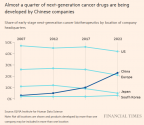
Pharmaceutics-
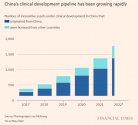
Optics , space telescopes , semiconductor tools(28nm/14nm) in these fields, China is not years/decade behind. they are rapidly closing the gap. this post is already too long. so cannot post more pics/images.
If detailed scrutiny “doesn’t work” then it’s not a well constructed list.Exotic materials is in the slightly behind group though, not neck and neck. Anyway I grouped all those exotic materials together, from what I can tell China is actually way behind in high entropy alloys, but they're doing ok on other exotic materials like graphene and carbon nanotubes, so it's averages out to slightly behind.
Anyway this kind of logic don't work when doing this kind of board comparsion. You might as well ask why China is doing so well on Quantum computing while their semiconductor industry lags, or why chinese EV so far ahead of chinese ICE cars. Why chinese drones are dominating but chinese aircraft aren't. Europe can't make a 5th gen fighter aircraft, but makes some of the best passenger jets and jet engines. Europe doesn't have a human rated rocket, but has some of the best space/ground telescopes and space science/astronomy programs out there. Etc etc.
Prof. Pan Jianwei and his team reached quantum supremacy again in solving two types of problems in graph theory. Their Jiuzhang optical quantum computer can find the results 180 million times faster than today's fastest classic computer in the world.
国际学术界对量子计算的实验发展制定了三步走的路线图,其中第一步是实现“量子计算优越性”,即通过高精度地操纵近百个物理比特,高效求解超级计算机无法在合理时间内解决的特定的高复杂度数学问题。这一步的意义在于首次从实验上确凿地证明量子计算加速,并挑战“扩展的丘奇—图灵论题”。因此,国际学术界下一阶段的一个重要科研目标是探索利用量子计算原型机演示具有实用价值的问题的求解。
近期,潘建伟团队在继续发展更高质量和更强拓展性的光量子计算原型机的同时,开展了将“九章”所执行的高斯玻色采样任务应用于图论问题的研究探索。图论起源于著名的“哥尼斯堡七桥问题”,被广泛用于描述事物之间的关系,例如社交网络、分子结构和计算机科学中的许多问题均可对应到图论问题。高斯玻色采样与图论问题具有紧密的数学联系,通过将高斯玻色采样设备的每个输出端口映射到图的顶点,将每个探测到的光子映射到子图的顶点,研究人员可以利用实验得到的样本加速搜索算法寻找具有更大密度或Hafnian的子图的过程,从而帮助这两类图论问题的求解。这两类图论问题在数据挖掘、生物信息、网络分析和某些化学模型研究等领域具有重要应用。
此次研究中,研究人员首次利用“九章”执行的高斯玻色采样来加速随机搜索算法和模拟退火算法对图论问题的求解。研究人员在实验中使用了超过20万个80光子符合计数样本,相比全球最快超级计算机使用当前最优经典算法精确模拟该实验的速度快约1.8亿倍。
快1.8亿倍!九章光量子计算原型机成功求解图论问题
8日,记者从中国科学技术大学获悉,该校由潘建伟、陆朝阳、刘乃乐等组成的研究团队,基于“九章”光量子计算原型机完成了对“稠密子图”和“Max-Haf”两类图论问题的求解,通过实验和理论研究了“九章”处理这两类图论问题为搜索算法带来的加速,以及该加速对于问题规模和实验噪声的依赖关系。该研究成果系首次在具有量子计算优越性的光量子计算原型机上开展的面向具有应用价值问题的实验研究。相关论文日前以“编辑推荐”的形式发表在国际学术期刊《物理评论快报》上,并被物理网站专题报道。国际学术界对量子计算的实验发展制定了三步走的路线图,其中第一步是实现“量子计算优越性”,即通过高精度地操纵近百个物理比特,高效求解超级计算机无法在合理时间内解决的特定的高复杂度数学问题。这一步的意义在于首次从实验上确凿地证明量子计算加速,并挑战“扩展的丘奇—图灵论题”。因此,国际学术界下一阶段的一个重要科研目标是探索利用量子计算原型机演示具有实用价值的问题的求解。
近期,潘建伟团队在继续发展更高质量和更强拓展性的光量子计算原型机的同时,开展了将“九章”所执行的高斯玻色采样任务应用于图论问题的研究探索。图论起源于著名的“哥尼斯堡七桥问题”,被广泛用于描述事物之间的关系,例如社交网络、分子结构和计算机科学中的许多问题均可对应到图论问题。高斯玻色采样与图论问题具有紧密的数学联系,通过将高斯玻色采样设备的每个输出端口映射到图的顶点,将每个探测到的光子映射到子图的顶点,研究人员可以利用实验得到的样本加速搜索算法寻找具有更大密度或Hafnian的子图的过程,从而帮助这两类图论问题的求解。这两类图论问题在数据挖掘、生物信息、网络分析和某些化学模型研究等领域具有重要应用。
此次研究中,研究人员首次利用“九章”执行的高斯玻色采样来加速随机搜索算法和模拟退火算法对图论问题的求解。研究人员在实验中使用了超过20万个80光子符合计数样本,相比全球最快超级计算机使用当前最优经典算法精确模拟该实验的速度快约1.8亿倍。
Chinese scientists from the Zhejiang University invented a new kind of materials that combines traits of polymers and ceramics. They have given this new material the name "elastic ceramic plastic".
Paper:
News story:
近日,浙江大学化学系唐睿康教授、刘昭明研究员合作团队发明了一种新物质,将有机化合物与无机离子化合物在分子尺度融合在一起,完美地实现了硬度与弹性在同一物质中的“兼容”,同时还能像塑料那样拥有可塑性。
此前科学界主要通过将有机物与无机物混合在一起来尝试折中两种物质的性能,在微观尺度上有机物和无机物仍然是相对独立的存在。而这次浙大团队首次在分子级别上实现有机化合物与无机离子化合物的结合,得到了一种性质完全不同于以往材料的新物质。团队将这种新物质命名为“弹性陶瓷塑料”。北京时间6月8日,这项成果在线刊发在国际顶级期刊《自然》上。论文第一作者为化学系博士生方威风,共同通讯作者为唐睿康和刘昭明。研究工作获得浙江大学慕昭博士,博士生何彦、孔康任,华东师范大学姜凯副研究员的支持。
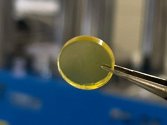
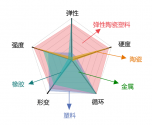
Paper:
Organic–inorganic covalent–ionic molecules for elastic ceramic plastic
Abstract
Although organic–inorganic hybrid materials have played indispensable roles as mechanical,,,, optical,, electronic, and biomedical materials,,, isolated organic–inorganic hybrid molecules (at present limited to covalent compounds,) are seldom used to prepare hybrid materials, owing to the distinct behaviours of organic covalent bonds and inorganic ionic bonds in molecular construction. Here we integrate typical covalent and ionic bonds within one molecule to create an organic–inorganic hybrid molecule, which can be used for bottom-up syntheses of hybrid materials. A combination of the organic covalent thioctic acid (TA) and the inorganic ionic calcium carbonate oligomer (CCO) through an acid–base reaction provides a TA–CCO hybrid molecule with the representative molecular formula TA2Ca(CaCO3)2. Its dual reactivity involving copolymerization of the organic TA segment and inorganic CCO segment generates the respective covalent and ionic networks. The two networks are interconnected through TA–CCO complexes to form a covalent–ionic bicontinuous structure within the resulting hybrid material, poly(TA–CCO), which unifies paradoxical mechanical properties. The reversible binding of Ca2+–CO32− bonds in the ionic network and S–S bonds in the covalent network ensures material reprocessability with plastic-like mouldability while preserving thermal stability. The coexistence of ceramic-like, rubber-like and plastic-like behaviours within poly(TA–CCO) goes beyond current classifications of materials to generate an ‘elastic ceramic plastic’. The bottom-up creation of organic–inorganic hybrid molecules provides a feasible pathway for the molecular engineering of hybrid materials, thereby supplementing the classical methodology used for the manufacture of organic–inorganic hybrid materials.News story:
近日,浙江大学化学系唐睿康教授、刘昭明研究员合作团队发明了一种新物质,将有机化合物与无机离子化合物在分子尺度融合在一起,完美地实现了硬度与弹性在同一物质中的“兼容”,同时还能像塑料那样拥有可塑性。
此前科学界主要通过将有机物与无机物混合在一起来尝试折中两种物质的性能,在微观尺度上有机物和无机物仍然是相对独立的存在。而这次浙大团队首次在分子级别上实现有机化合物与无机离子化合物的结合,得到了一种性质完全不同于以往材料的新物质。团队将这种新物质命名为“弹性陶瓷塑料”。北京时间6月8日,这项成果在线刊发在国际顶级期刊《自然》上。论文第一作者为化学系博士生方威风,共同通讯作者为唐睿康和刘昭明。研究工作获得浙江大学慕昭博士,博士生何彦、孔康任,华东师范大学姜凯副研究员的支持。


